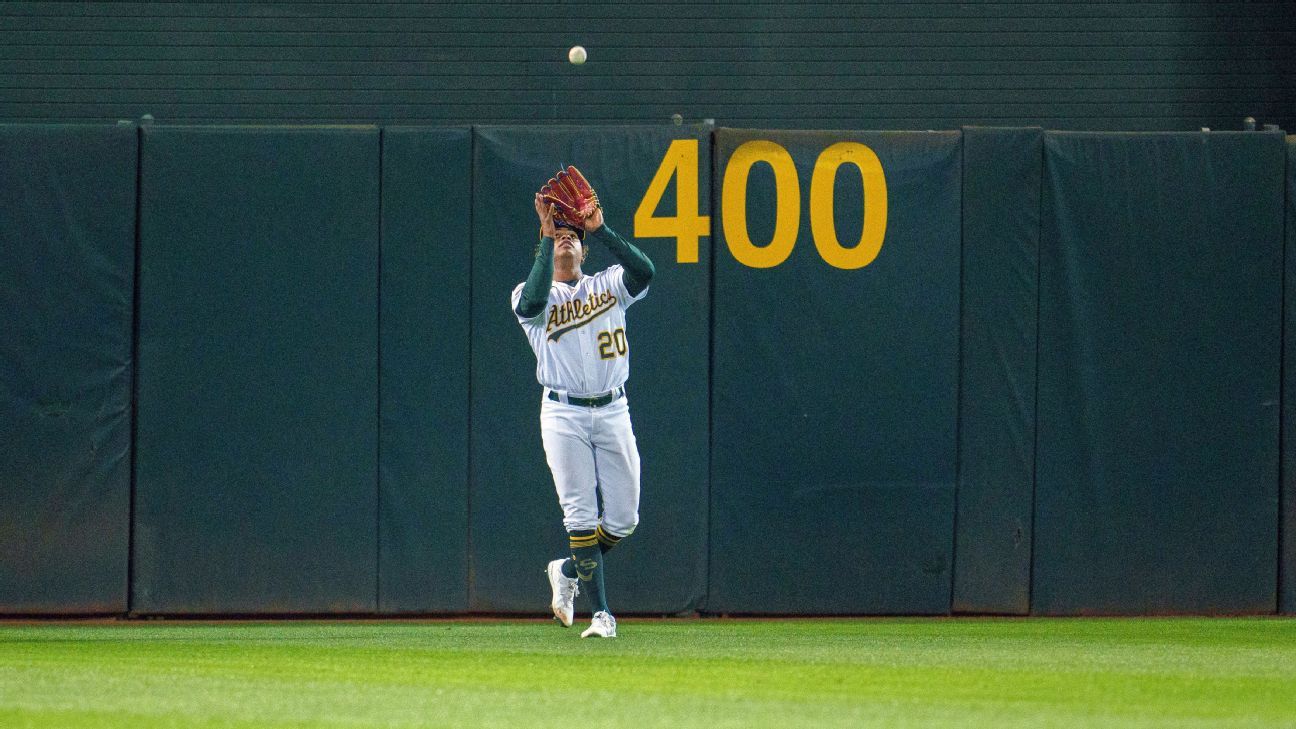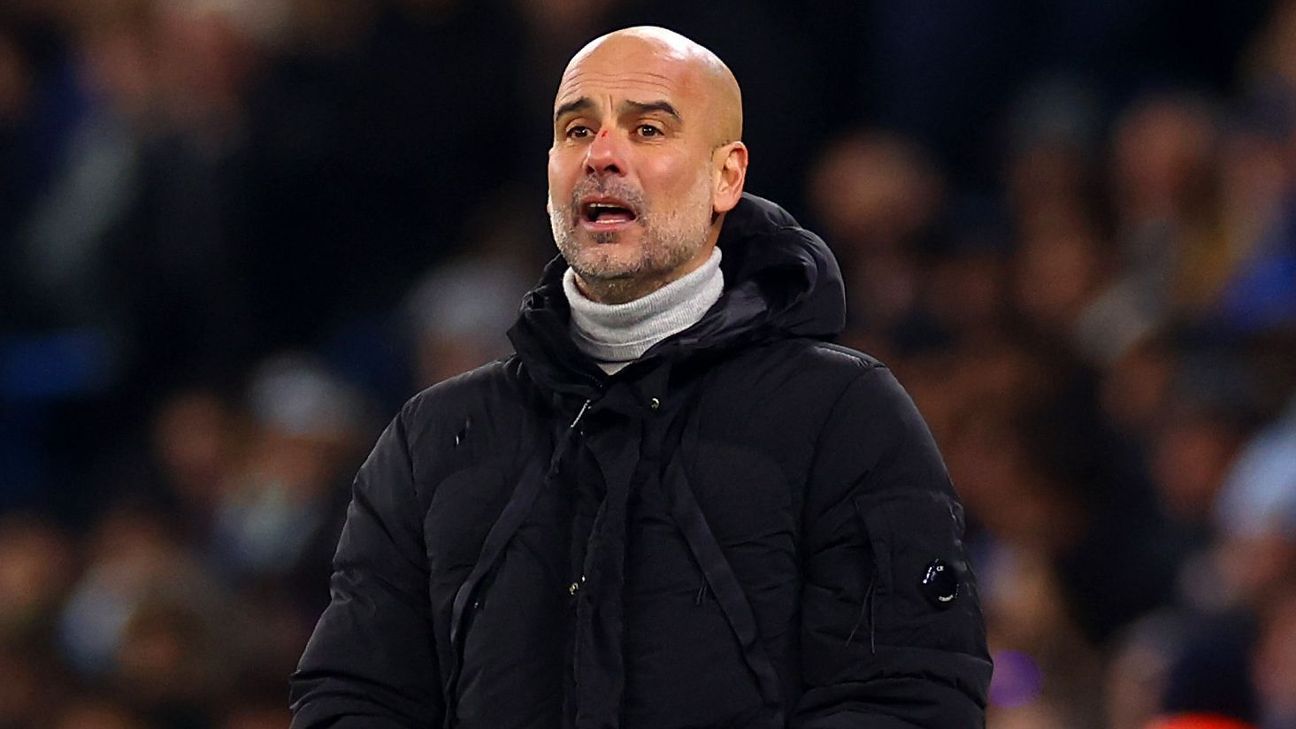
Tune in to an MLB game on any given night, and there's a good chance the conversation will turn to the topic that's dominating the sport so far this season.
The latest exploits of Shohei Ohtani? Nope. The red-hot starts both New York teams are off to in 2022? Try again. The loaded Los Angeles Dodgers? Not this spring.
Instead, the theme on everyone's mind is the baseball itself -- namely, what MLB has done to the ball being used this season and how it is impacting the on-field product.
We dig into what is really going on with the ball, how it is shaping the game and what it means for MLB's future.
Offense is down across the majors
MLB teams averaged 4.0 runs per game in April, which is the lowest average for a month since 1981, and 0.26 runs per team per game fewer than a season ago.
In fact, the leaguewide batting average of .231 was the lowest through April in MLB history, and the .675 OPS was the lowest since 1968 -- aka The Year of the Pitcher.
Offenses are scoring the fewest runs per game in four decades, posting the worst OPS in more than 50 years and hitting for the lowest batting average ever one month into the season -- but the numbers are even more eye-opening when you account for the fact that the universal DH was added this season.
Pitchers hit just .110 a season ago, the worst mark in a full season in MLB history, and leaguewide batting average, OPS and isolated power have still all decreased from last April to this April:
2022: .231 BA, .675 OPS .137 ISO
2021: .232 .BA, 699 OPS, .157 ISO
Loss of the long ball is to blame
The decline of batting average is nothing new in baseball -- in fact, the past four full seasons account for each of the four lowest individual April leaguewide marks in the past 40 full seasons -- but it's baseball's home run rate falling off a cliff that has killed offense so far this year.
Just 36% of runs this April came via home runs, the lowest total through April since 2015. Remember 2019, the Year of the Home Run, when MLB hitters hit the most homers in the history of the sport? That April, 43.5% of runs came via home runs, so there has been a massive drop in just three years.
"Something is different because we look at the metrics. We see how hard it's hit then we see the ball get caught," Chicago Cubs infielder Patrick Wisdom told ESPN. "It starts raising some eyebrows, raising some questions."
For the first time since 2015, there was less than one home run hit per team per game for the first month of the season:
2022: 0.91
2021: 1.14
2019: 1.31
2018: 1.09
2017: 1.17
2016: 1.05
2015: 0.91
The ball is traveling differently
We honed in on balls that were hit with an exit velocity between 102 and 105 mph and a launch angle between 27 and 29 degrees. These batted balls are in line with the average 103.6 exit velo and distance traveled of 399.7 feet on all home runs since Statcast was introduced in 2015. To limit the impact of weather on the outcome, we limited our research to two indoor venues: Milwaukee's Miller Park (now called American Family Field) and Tampa Bay's Tropicana Field.
Six of the seven batted balls from previous seasons fitting our criteria resulted in home runs -- compared to just three of the balls hit in 2022. Every ball hit that falls within our parameters this season traveled significantly fewer total feet than its counterpart from a previous season, despite having similar exit velocity at a similar launch angle in the same conditions.
"The ball ain't the same as it used to be. I used to be 165 pounds soaking wet here flicking balls out," Brewers outfielder Andrew McCutchen said. "I've hit some that don't continue to keep going. Then we're having conversations like, 'How did this guy have an exit velo of 96 with a launch angle of 31, and his ball went out, and I had an exit velo of 100 and 28 launch angle and mine didn't go out?' ... Baseball players aren't getting any weaker."
The baseball really is different
Yes, the baseball itself is fundamentally different in 2022 -- and that's intentional.
In a memo sent to every team this offseason, MLB outlined a plan to change the ball in response to the soaring home run rates in recent seasons. A record 6,776 home runs were hit during the 2019 regular season, and the rate had fallen only slightly -- from 6.6% of plate appearances resulting in homers in 2019 to 6.5% last year.
In an effort to better center the ball, tension was loosened on the first of three wool windings within the ball. Rawlings' research ahead of the season estimated the adjustment would bring down the coefficient of restitution (a measurement of the bounciness) and also reduce the ball's weight by 2.8 grams without changing its size.
Those changes were designed to lose one to two feet of distance on balls hit more than 375 feet -- but a look at the batted balls most likely to leave the yard (hit with a 100 mph exit velocity and a 20- to 35-degree launch angle) compared to recent Aprils shows the impact goes beyond that.
"There definitely have been times this season where I've been like, 'I can't believe that ball didn't go out,'" said Dodgers pitcher Daniel Hudson. "I don't really know what the answer is, whether they gotta tighten them back up or whatever the hell they're doing. I guess that was guys' problem -- there's no openness to it."
The humidor is also playing a big role
For the first time, all 30 teams are using humidors to store their baseballs -- up from 10 last season. Humidors make the ball uniform by standardizing the amount of water in the air around the ball. There is a big difference in the aggregate 2022 changes in offensive rates in the 10 stadiums that already had humidors and the 20 that have added one for this season.
That is pretty stark. Home runs per fly ball have declined 0.7% in humidor holdovers, while dropping 2.4% in the new humidor parks, which means that the number of at-bats per home runs has barely changed in the holdovers, but in the new ones, it has taken an average of 13.1 more ABs to hit a home run.
"There was one in Minnesota where I hit like 106 at 29 degrees, got caught at the track. That should be a no-doubt homer. The other one was 104 at 27, which should be a homer and got caught." Dodgers infielder Gavin Lux said. "Talking to some guys in Atlanta where [the second] ball was hit, it's like, boom, hot off the bat, then they get up and just kind of die in the air."
Offense in the ballparks that already had humidors in April 2021 looks similar this season, but the decline in places where the humidor is debuting is powering the loss of production across the sport.
Why there's still hope for offense
The good news for fans of offense is that it does usually pick up as the season progresses and the weather warms up. Here's a look at month-by-month offense from 2015 to 2021:
March/April: .244/.317/.403, .720 OPS, HR every 30.1 AB, 4.39 RPG
May: .250/.319/.413, .732 OPS, HR every 28.9 AB, 4.45 RPG
June: .255/.321/.423, .744 OPS, HR every 27.6 AB, 4.61 RPG
July: .253/.321/.421, .742 OPS, HR every 28.3 AB, 4.57 RPG
August: .254/.322/.426, .749 OPS, HR every 26.7 AB, 4.63 RPG
Sept/Oct: .249/.320/.416, .736 OPS, HR every 28.2 AB, 4.56 RPG
"We've had so many balls hit to the warning track, for us and against us. ... They're dying at the wall, but we've only played in cold weather, " says White Sox infielder Jake Burger. "We have to wait until May or June."
We asked our MLB experts about what we will see the rest of the season and what the league should do about its ongoing saga.
Brad Doolittle: All we need from the ball is as much consistency as possible from batch to batch and year to year. Other than that, it's good that home run rates this year are down, and they could even stand to decline a little more. Runs are low, but they'll go up as the weather warms -- but the issue remains more about how runs are scored than how many. There is a real decline in home run rate leading to a higher rate of non-homer scoring. It's a step in a direction towards which we need to keep heading.
Jesse Rogers: Perhaps baseball shouldn't do anything. As Angels manager Joe Maddon noted, the opposite-field long ball by non-home run hitters has subsided so far this season. That's the way it should be. True power hitters are still going to get theirs. If the trend continues, the current launch-angle era might take a backseat to the return of a more complete hitter. It'll take some time, but perhaps that's MLB's goal in the first place.
David Schoenfield: What baseball must ask itself is what kind of game is most optimal? How many runs per game do we want, how many home runs, how many triples and stolen bases and balls in play? And so on. The ball itself is part of that equation, but only part of the equation. This isn't new; just look at the history of the sport. There are many instances of run scoring fluctuating from year to year (although the inconsistencies of the past few years are certainly frustrating).
I do expect run scoring to go up the rest of the season, especially once the pitcher roster limit goes back to 13 ... and, frankly, if the answer to the above question is "more runs," the limitations on pitchers should eventually go back at least to 12.
Alden Gonzalez: Here's the one thing players have clamored for over the last few weeks: transparency. They want more information from MLB on the types of baseballs being used, how they're stored, how they're handled, and why, oftentimes, one seems vastly different from another. New York Mets pitcher Chris Bassitt lent his voice to that recently, and he's far from alone. Lux told me he picked up two foul balls in the dugout recently and was shocked to find that one had significantly higher seams than the other. "Some balls it seems like are carrying more than ever," Lux said, "and then some feel like duds." This is a problem. MLB needs consistency with its most essential product -- the literal ball.
Information from ESPN Stats & Info and ESPN's Bradford Doolittle, Alden Gonzalez, Jesse Rogers and David Schoenfield was used throughout this story.















 Phone: (800) 737. 6040
Phone: (800) 737. 6040 Fax: (800) 825 5558
Fax: (800) 825 5558 Website:
Website:  Email:
Email: 






